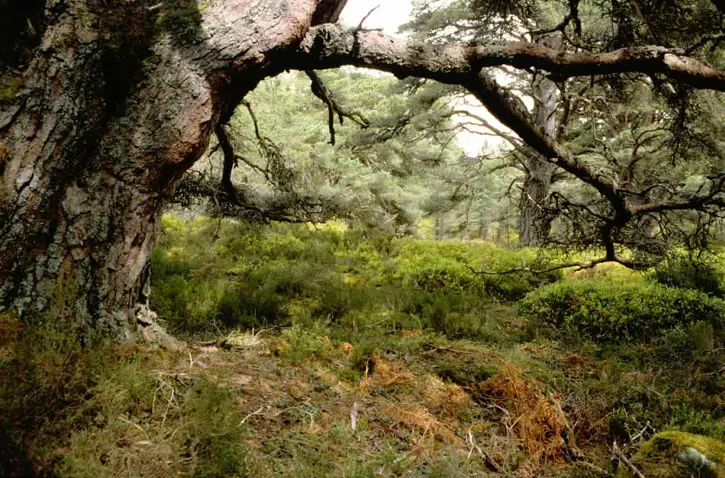Black Wood of Rannoch
Black Wood of Rannoch
The Black Wood of Rannoch contains some of the largest areas of ancient pine forest in Scotland. Some of the trees are thought to be hundreds of years old, and it is home to a rich variety of plants, insects, birds and animals.
The wood, which is in Highland Perthshire, is also popular with visitors and contains a network of well-maintained paths at Carie. The Black Wood also serves an important role as a living and growing place for forestry research.

Learning about native pinewood
By studying the Black Wood of Rannoch, we’re learning how pinewoods develop through natural processes.
We’ve also set up a number of long-running experiments to find out the best ways to regenerate this important habitat. These include removing non-native trees, encouraging seedlings and controlling deer.
Today, the Black Wood is a Site of Special Scientific Interest and a Forest Nature Reserve. But this wasn’t always the case.
Centuries of exploitation
Before we took over the management of the Black Wood in 1947, the forest had been exploited for timber for nearly 200 years. An elaborate system of canals was even built throughout the forest to help move the logs.
During the First World War, there were plans to fell it completely and, although many trees were felled in the Second World War, the Black Wood survived.
Conservation
Since starting to monitor the forest, we now have nearly 60 years’ worth of information to help us manage and conserve not only the Black Wood but also important ancient woodland habitats across the whole of Scotland.
There are practical benefits too. Over the years, large quantities of Scots pine seed have been collected from the Black Wood and used in new native woodland schemes all over the country.
Visit the Black Wood of Rannoch
You can enjoy the magical ancient pines of the Black Wood of Rannoch at Carie and camp among them at Kilvrecht campsite.